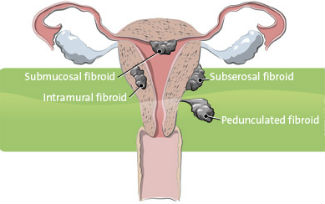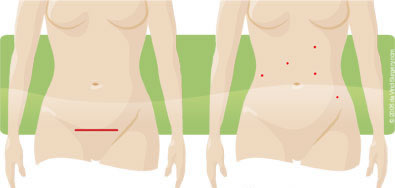Robotic Assisted Myomectomy of Uterine Fibroids
 Uterine fibroids are benign (non-cancerous) tumors that can grow underneath the uterine lining, inside the uterine wall, or outside the uterus. They also are called fibroids, uterine tumors, leiomyomata and myomas.
Uterine fibroids are benign (non-cancerous) tumors that can grow underneath the uterine lining, inside the uterine wall, or outside the uterus. They also are called fibroids, uterine tumors, leiomyomata and myomas.
Symptoms of Uterine Fibroids
Many women don’t feel any symptoms with uterine tumors or fibroids. But for others, these fibroids can cause:
- Excessive menstrual bleeding
- Abnormal periods
- Uterine bleeding
- Pain
- Discomfort
- Frequent urination
- Infertility
Treatment for Uterine Fibroids
Treatments for fibroids include uterine fibroid embolization – which shrinks the tumor – and surgery. Surgical treatment for uterine tumors most often involves the surgeon removing the entire uterus, via hysterectomy.
While hysterectomy is a proven way to resolve fibroids, it may not be the best surgical treatment for every woman. If, for example, you hope to later become pregnant, you may want to consider alternatives to hysterectomy like myomectomy. Myomectomy is a uterine-preserving procedure performed to remove uterine fibroids.
The conventional approach to myomectomy is open surgery, through a large abdominal incision. After cutting around and removing each uterine fibroid, the surgeon must carefully repair the uterine wall to minimize potential uterine bleeding, infection and scarring. Proper repair is also critical to reducing the risk of uterine rupture during future pregnancies.
While myomectomy also is performed laparoscopically, this approach can be challenging for the surgeon, and may compromise results compared to open surgery. Laparoscopic myomectomies often take longer than open abdominal myomectomies, and up to 28 percent are converted during surgery to an open abdominal incision.
Robotic-Assisted Myomectomy: A Less Invasive and More Effective Option
 Robotic-assisted myomectomy is a less invasive and potentially more effective surgical treatment for uterine fibroids that does not require a large incision.
Robotic-assisted myomectomy is a less invasive and potentially more effective surgical treatment for uterine fibroids that does not require a large incision.
Benefits of Robotic-Assisted Myomectomy
When performed robotically with the da Vinci Surgical System, myomectomy is a minimally invasive, yet remarkably precise, comprehensive reconstruction of the uterine wall, regardless of the size or location of fibroids. The unique level of control and precision helps surgeons provide the most precise and thorough reconstruction possible, helping to prevent possible uterine rupture (tearing) during future pregnancies.
Additional benefits of the robotic-assisted myomectomy include:
- Opportunity for future pregnancy
- Significantly less pain
- Less blood loss
- Fewer complications
- Less scarring
- A shorter hospital stay
- A faster return to normal daily activities
As with any surgery, these benefits cannot be guaranteed, as surgery is both patient- and procedure-specific. While robotic-assisted myomectomy is considered safe and effective, it may not be appropriate for every individual. Always ask your doctor about all treatment options, as well as their risks and benefits.
Illustrations courtesy of Intuitive Surgical, Inc.